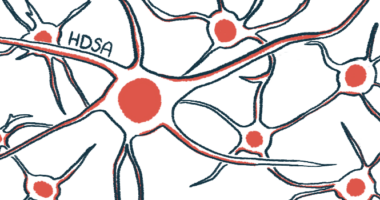Huntington’s disease diet: Foods to eat and avoid
Last updated Jan. 15, 2025, by Agata Boxe

Nutrition plays a key role in Huntington’s disease because a well-balanced diet can help relieve symptoms.
Huntington’s disease is a neurological disorder with symptoms such as involuntary muscle movements, referred to as chorea, as well as emotional, behavioral, and personality changes.
Movement-related issues and other factors lead to increased calorie needs, but swallowing problems can make it difficult to meet them. Adjusting your diet to manage the challenges of eating with Huntington’s can help you better manage the disease.
Importance of diet in Huntington’s disease
For people with Huntington’s disease, nutrition is especially important.
Losing excessive amounts of weight is not uncommon. Many people with Huntington’s have dysphagia or difficulty swallowing, which can make getting enough calories harder as eating becomes difficult.
Research suggests people with Huntington’s are often underweight and may require more calories than usual per day. Chorea tends to increase caloric needs, and the disease has been linked to metabolic abnormalities that may also lead to weight loss.
Chorea can also make it challenging to eat and prepare meals. And the cognitive changes from Huntington’s can cause you to forget to have meals.
Preventing or stopping weight loss by getting enough calories is crucial.
Foods to eat
The higher calorie needs and swallowing issues caused by Huntington’s disease dictate what foods to include in your diet.
People with Huntington’s disease should generally aim for a body mass index (BMI) at the higher end of the healthy range, or a BMI of 24-26. Consult your doctor regarding your optimal BMI.
Protein intake for Huntington’s disease patients matters as well, because unintentional weight loss often results in less muscle mass, and protein helps to build and maintain muscle.
Some research also suggests following the Mediterranean diet — high in veggies and healthy fats such as olive oil — may ease Huntington’s disease symptoms though the findings are inconsistent.
In general, eat plenty of foods with healthy fats and protein to prevent weight loss and maintain muscle. The foods you choose should be soft and easy to swallow.
The best foods to manage Huntington’s disease symptoms include:
- avocados
- full-fat milk and yogurt
- hearty soups
- fully cooked meat and fish
- smooth nut butters
- protein milkshakes
- soft cheeses
- tofu
- tempeh.
A sweet, soft treat like ice cream or custard can be a good choice for satisfying your energy needs.
Some foods have been said to be good for the brain, which include vitamin B12, foods rich in antioxidants and omega-3, and healthy fats, found in olive oil, salmon, and avocados. However, more evidence is needed to support their role in managing Huntington’s.
Foods to avoid
Swallowing issues from Huntington’s disease can increase the risk of choking, which is why foods that are difficult to chew or swallow should be avoided.
Foods to avoid with Huntington’s include:
- raw fruits
- flaky puff pastry
- granola
- tough, crusty bread
- nuts
- raw, stringy vegetables.
Because of a choking risk, you should also avoid bacon, tomatoes, and other foods that separate into strings or pieces while they are being chewed.
Swallowing difficulties for Huntington’s disease
There are other ways to manage swallowing difficulties from Huntington’s.
- Eat small amounts of food more often as opposed to two or three large meals per day because it is easier to chew and swallow smaller portions.
- Add sauces and gravy to ease swallowing.
- If possible, rest for an hour or two before a meal so you conserve energy for eating.
- Sit upright while eating, if possible, using a supportive chair and positioning aids if needed, and for about half an hour after your meal to reduce the risk of choking.
- Take your time eating, allocating about an hour or longer to each meal.
- Eliminate distractions during meals to focus on chewing your food thoroughly to avoid choking.
Speech therapy is a way to address swallowing issues as well. A speech therapist can assess your swallowing and suggest strategies for eating and drinking as well as swallowing exercises to manage any issues.
Meal planning and preparation
Meal planning and preparation can help you meet your dietary needs with Huntington’s.
Rely on recipes you like and create a list of ingredients you need for each week. You can also consult with a registered dietitian to suggest a realistic diet and provide meal plans.
You may need to modify the texture of food depending on the stage of your disease because swallowing difficulties often occur or increase as Huntington’s progresses.
While you may be able to handle regular food textures in the early stages of the disease, by the middle and later stages you are likely going to want to blend or puree foods.
The Huntington’s Disease Society of America (HDSA) Center of Excellence at UC Davis Health offers meal ideas and tips about nutrition. The HDSA Tennessee Chapter also has a list of recipes and tips for eating with Huntington’s disease.
You may need to adjust some of the meals based on the stage you are in by modifying the textures, such as chopping the meats and other ingredients versus blending them.
According to Massachusetts General Hospital, smoothies are a great source of protein and extra calories for people with Huntington’s, so they offer suggestions for creating nutritious smoothies.
Tube feeding and other adaptive devices
In advanced Huntington’s, you may no longer be able to feed yourself or safely eat food with your mouth, which makes tube-feeding necessary. Even if you don’t require tube feeding, other assistive devices may be helpful.
A feeding tube can be inserted either through the nose to the stomach or directly to the stomach or small intestine. Surgery is required to place tubes directly into the stomach or intestine.
Your doctor will usually suggest the option to begin tube-feeding, which you can do yourself at home or with help from a caregiver. The site of tube insertion should be kept clean and dry. Special liquid food containing carbohydrates, protein, fats, minerals, and vitamins can be given through the tube.
If you don’t require tube feeding, other adaptive devices can help you manage eating with Huntington’s.
Examples include:
- utensils with thick handles that are easy to hold
- plate guards to prevent food from spilling onto the table
- cups with lids to prevent spillage
- dishes to keep food warm for longer
- plastic apron to protect clothing from spillage.
Eating with Huntington’s can be challenging, but having the right information, strategies, and devices can help you better manage it.
Huntington’s Disease News is strictly a news and information website about the disease. It does not provide medical advice, diagnosis, or treatment. This content is not intended to be a substitute for professional medical advice, diagnosis, or treatment. Always seek the advice of your physician or other qualified health provider with any questions you may have regarding a medical condition. Never disregard professional medical advice or delay in seeking it because of something you have read on this website.
Recent Posts
- Like the Hulk, my wife sometimes struggles to hold it together
- What I want medical students to know about Huntington’s and bias
- Ingrezza treatment eases disease burden due to Huntington’s chorea
- A murder trial opened my eyes about Huntington’s and face reading
- What I want people to stop saying about Huntington’s disease
- HDSA 2025: Dance classes may improve balance in Huntington’s
- HDSA 2025: Long-term care transition requires communication
- Guest Voice: Huntington’s disease is rare, but love isn’t
- HDSA 2025: Observational studies in Huntington’s now enrolling in US
- HDSA 2025: Speakers spotlight Huntington’s clinical trials





